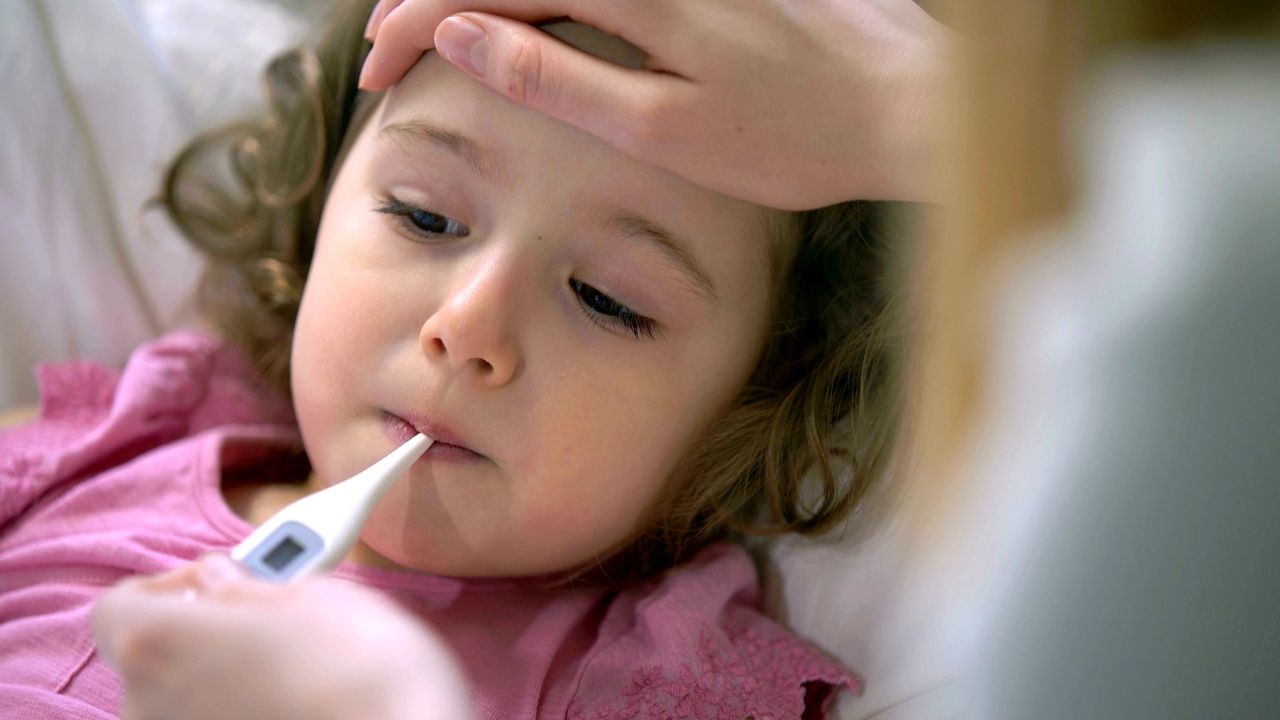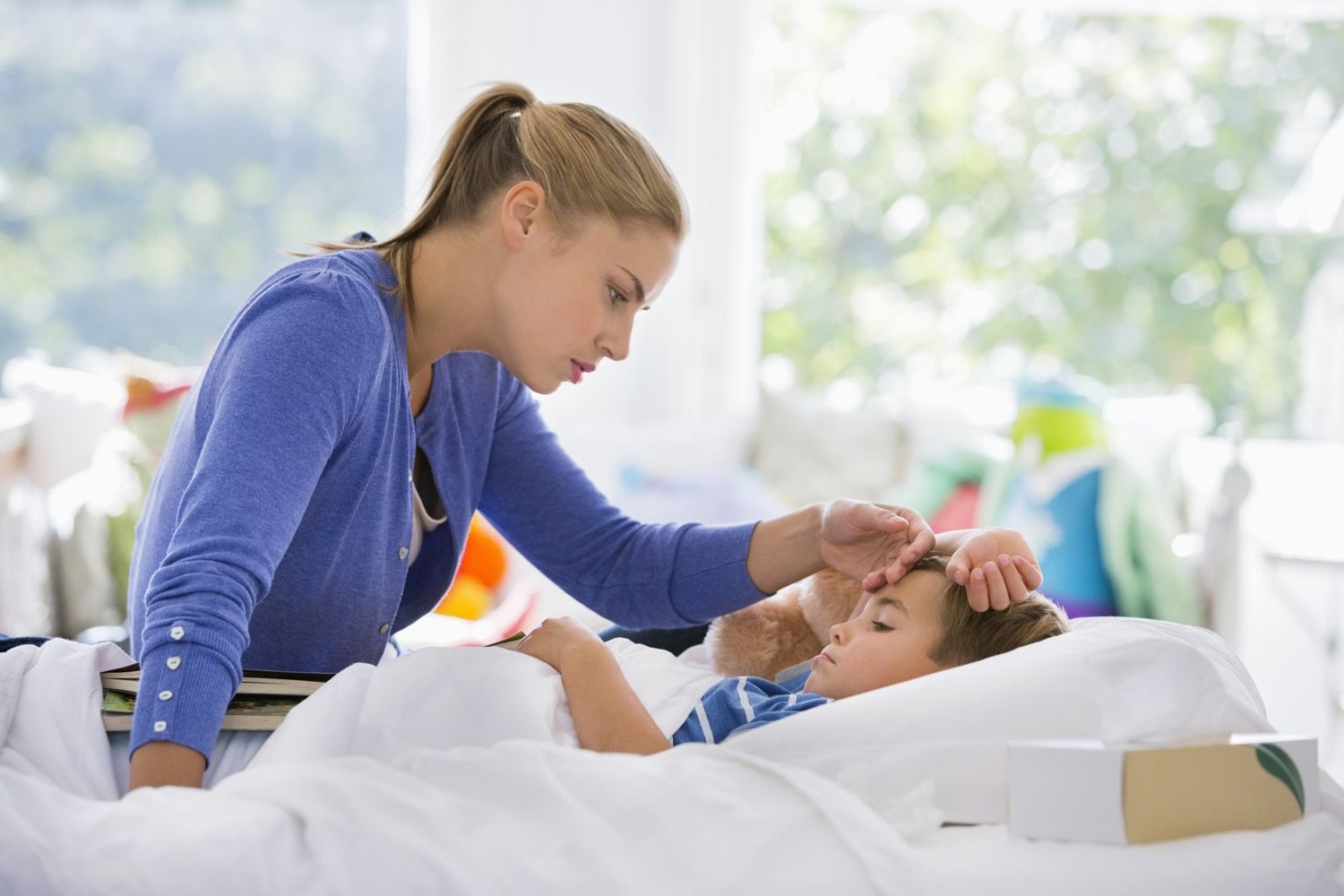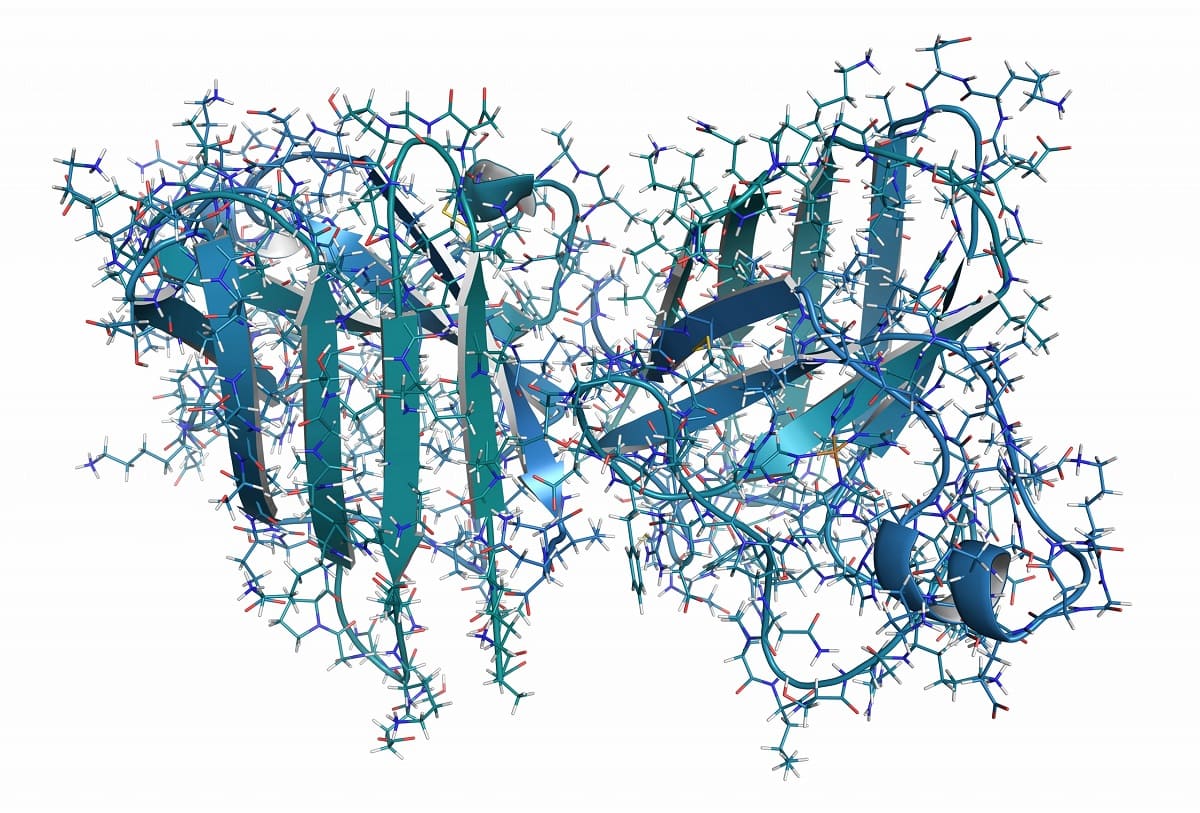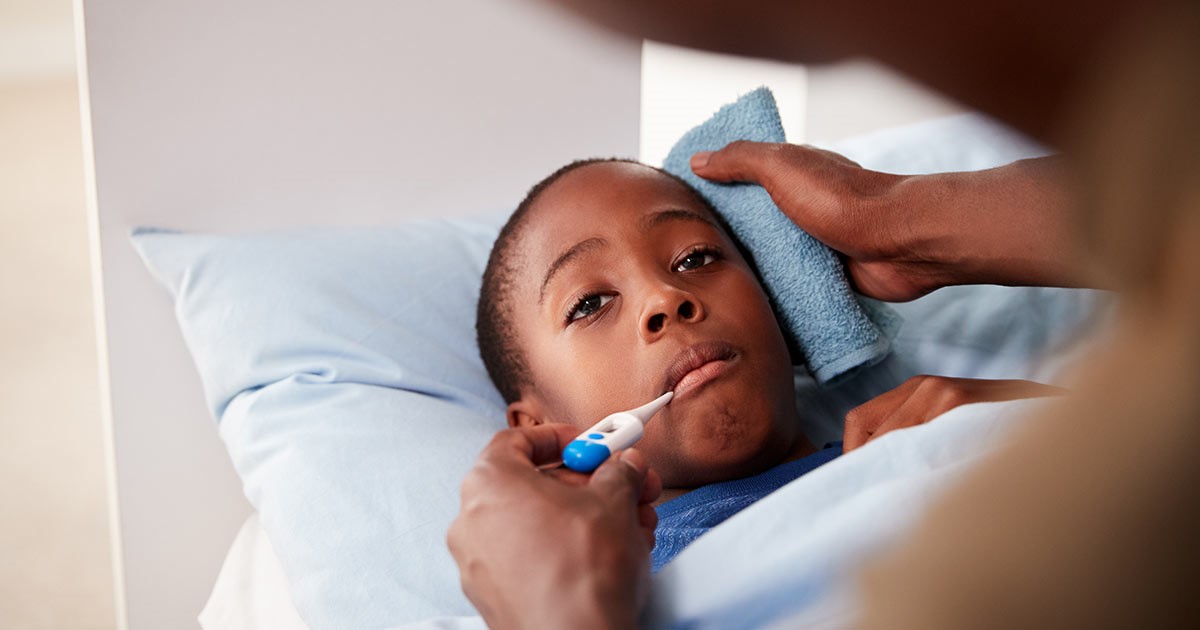Home>Health & Nutrition>Effective Ways To Lower A 104 Fever In Children


Health & Nutrition
Effective Ways To Lower A 104 Fever In Children
Published: March 6, 2024
Discover effective ways to lower a 104 fever in children with our expert tips on health and nutrition. Keep your child healthy and happy.
(Many of the links in this article redirect to a specific reviewed product. Your purchase of these products through affiliate links helps to generate commission for Temperatures.com, at no extra cost. Learn more)
Table of Contents
- Understanding the Causes of a 104 Fever in Children
- Identifying the Symptoms of a 104 Fever in Children
- Seeking Medical Attention for a 104 Fever in Children
- Using Medication to Lower a 104 Fever in Children
- Implementing Home Remedies to Lower a 104 Fever in Children
- Ensuring Proper Hydration and Rest for Children with a 104 Fever
Understanding the Causes of a 104 Fever in Children
A fever of 104 degrees Fahrenheit in children can be a distressing experience for both the child and the parents. Understanding the potential causes of such a high fever is crucial in addressing the underlying issue effectively.
One common cause of a 104 fever in children is viral infections. Viruses such as influenza, adenovirus, and respiratory syncytial virus (RSV) can lead to high fevers. These infections often affect the respiratory system, causing symptoms such as coughing, congestion, and sore throat. Additionally, gastrointestinal viruses like norovirus and rotavirus can also trigger high fevers in children, accompanied by symptoms like vomiting and diarrhea.
Bacterial infections are another significant contributor to high fevers in children. Conditions such as urinary tract infections, pneumonia, and bacterial meningitis can lead to fevers of 104 degrees Fahrenheit or higher. These infections often manifest with specific symptoms, such as pain during urination, difficulty breathing, and severe headaches, respectively.
Furthermore, inflammatory conditions such as Kawasaki disease and rheumatic fever can result in high fevers in children. These conditions involve the body's immune system and can lead to prolonged and severe fevers, often accompanied by other symptoms such as rash, joint pain, and swelling.
In some cases, a 104 fever in children may be triggered by external factors such as heatstroke or reaction to certain medications. Heatstroke occurs when a child's body temperature rises rapidly due to prolonged exposure to high temperatures, leading to a fever and potentially life-threatening complications. Additionally, adverse reactions to medications, particularly antibiotics and anticonvulsants, can cause high fevers in children.
Understanding the potential causes of a 104 fever in children is essential for prompt and effective intervention. By recognizing the underlying factors contributing to the fever, parents and caregivers can take appropriate steps to address the child's condition and seek medical attention when necessary.
Read more: Ideal Fever Temperature For Children
Identifying the Symptoms of a 104 Fever in Children
When a child experiences a fever of 104 degrees Fahrenheit, it's crucial for parents and caregivers to be vigilant in identifying associated symptoms. Recognizing these symptoms can provide valuable insights into the underlying cause of the fever and guide appropriate actions to alleviate the child's discomfort and promote recovery.
One of the primary symptoms accompanying a 104 fever in children is intense heat and flushed skin. The child's body may feel significantly warmer than usual, and their skin may appear red or flushed, indicating the body's heightened temperature. Additionally, the child may experience profuse sweating as the body attempts to regulate its temperature, leading to damp skin and clothing.
Another common symptom of a high fever in children is irritability and general discomfort. The child may exhibit increased fussiness, restlessness, and overall irritability, often expressing distress through crying or agitation. This behavioral change is a natural response to the physical discomfort caused by the elevated body temperature.
Furthermore, children with a 104 fever may display signs of dehydration, such as dry mouth, decreased urine output, and sunken eyes. Dehydration can exacerbate the effects of the fever and compromise the child's overall well-being. Therefore, monitoring the child's hydration status is crucial in managing a high fever effectively.
In some cases, accompanying symptoms such as headache, muscle aches, and fatigue may be present. These symptoms can contribute to the child's overall discomfort and may indicate the presence of an underlying infection or inflammatory condition. Additionally, respiratory symptoms such as coughing, congestion, and difficulty breathing may accompany a 104 fever, particularly if the fever is caused by a respiratory infection.
It's important to note that certain symptoms, such as a stiff neck, severe headache, and sensitivity to light, may indicate a more serious underlying condition, such as meningitis. These symptoms warrant immediate medical attention to ensure timely intervention and appropriate treatment.
By identifying and monitoring the symptoms accompanying a 104 fever in children, parents and caregivers can gain valuable insights into the child's condition and make informed decisions regarding medical care and symptom management. Recognizing the specific symptoms associated with a high fever enables proactive and targeted support for the child's recovery and overall well-being.
Seeking Medical Attention for a 104 Fever in Children
When a child experiences a fever of 104 degrees Fahrenheit, seeking prompt medical attention is paramount to ensure proper evaluation and appropriate management of the underlying cause. While fevers are a natural immune response to infections and other illnesses, a high fever in children can indicate a potentially serious condition that requires medical intervention.
One of the primary considerations when seeking medical attention for a 104 fever in children is the persistence and severity of the fever. If the fever persists for an extended period or is accompanied by other concerning symptoms, such as difficulty breathing, severe headache, or persistent vomiting, immediate medical evaluation is essential. Additionally, if the child's fever spikes rapidly or does not respond to over-the-counter fever-reducing medications, medical attention should be sought without delay.
Furthermore, the child's age and medical history play a crucial role in determining the urgency of medical care. Infants under three months of age with a 104 fever should receive immediate medical attention, as their immune systems are still developing, and high fevers can indicate severe infections. Similarly, children with underlying medical conditions, such as heart disease, cancer, or compromised immune systems, require prompt medical evaluation when experiencing a high fever, as they may be more susceptible to severe complications.
In addition to the fever itself, the presence of specific symptoms can also indicate the need for medical attention. Symptoms such as lethargy, confusion, persistent diarrhea, and signs of dehydration warrant immediate medical assessment to identify and address the underlying cause of the fever. Furthermore, if the child has recently traveled to areas with a high prevalence of infectious diseases or has been in close contact with individuals exhibiting similar symptoms, medical attention should be sought to rule out potential contagious illnesses.
Seeking medical attention for a 104 fever in children is not only crucial for identifying and addressing the underlying cause but also for providing reassurance and support to both the child and their caregivers. Timely medical evaluation can help alleviate concerns, provide appropriate treatment, and ensure the child's well-being. Therefore, when in doubt, it is always best to err on the side of caution and seek medical advice from a healthcare professional experienced in pediatric care.
Using Medication to Lower a 104 Fever in Children
When it comes to addressing a 104 fever in children, the use of medication to lower the fever and alleviate discomfort is a common approach. However, it is essential for parents and caregivers to exercise caution and follow appropriate guidelines when administering fever-reducing medications to children.
One of the most commonly used medications for reducing fever in children is acetaminophen, also known as paracetamol. This over-the-counter medication is available in various forms, including liquid suspension and chewable tablets, making it suitable for different age groups. When administering acetaminophen to a child with a 104 fever, it is crucial to carefully follow the dosing instructions based on the child's age and weight. Exceeding the recommended dosage can lead to adverse effects, emphasizing the importance of precise administration.
Another widely used fever-reducing medication for children is ibuprofen. Like acetaminophen, ibuprofen is available in liquid and chewable forms, catering to different age groups. Ibuprofen works by reducing inflammation in addition to lowering fever, making it particularly effective for fevers accompanied by symptoms such as headache and muscle aches. As with acetaminophen, it is essential to adhere to the recommended dosage and frequency when administering ibuprofen to children.
When deciding between acetaminophen and ibuprofen for fever management, it is advisable to consult a healthcare professional, as certain factors, such as the child's age, existing medical conditions, and potential drug interactions, may influence the choice of medication. Additionally, alternating between acetaminophen and ibuprofen at appropriate intervals, as advised by a healthcare provider, can provide effective fever control while minimizing the risk of medication-related complications.
It is important to note that aspirin should never be administered to children or adolescents to lower a fever, as it has been associated with a rare but serious condition called Reye's syndrome. This potentially life-threatening condition can affect the liver and brain and is linked to the use of aspirin in children and teenagers recovering from viral infections.
In summary, the use of medication to lower a 104 fever in children should be approached with careful consideration of the child's age, weight, and medical history. Adhering to recommended dosages, seeking guidance from healthcare professionals, and avoiding the use of aspirin are essential practices in ensuring safe and effective fever management in children. By utilizing fever-reducing medications responsibly, parents and caregivers can help alleviate the child's discomfort and support their recovery while minimizing the risk of adverse effects.
Implementing Home Remedies to Lower a 104 Fever in Children
When faced with a 104 fever in children, implementing home remedies can complement medical interventions and provide additional support in managing the fever and alleviating the child's discomfort. These simple yet effective remedies can contribute to the child's overall well-being and aid in the recovery process.
1. Fluid Intake
Encouraging the child to consume ample fluids is crucial in preventing dehydration and supporting the body's natural healing processes. Offer water, clear broths, and oral rehydration solutions to replenish lost fluids and maintain hydration. Additionally, popsicles and diluted fruit juices can be appealing options to entice the child to drink more fluids.
2. Comfortable Clothing and Environment
Dressing the child in lightweight, breathable clothing can help dissipate excess body heat and promote comfort. Additionally, maintaining a cool and well-ventilated environment can aid in regulating the child's body temperature. Using a fan or adjusting the room temperature to a comfortable level can contribute to the child's overall well-being.
3. Lukewarm Bath or Sponge Bath
A lukewarm bath or sponge bath can help lower the child's body temperature and provide relief from the discomfort of a high fever. Avoid using cold water, as it can cause shivering and potentially elevate the fever. Instead, use lukewarm water to gently reduce the child's body temperature and promote relaxation.
4. Rest and Comfort
Ensuring that the child gets adequate rest is essential for supporting the body's immune response and promoting recovery. Create a comfortable and soothing environment that encourages restful sleep and relaxation. Providing a favorite blanket or stuffed toy can offer comfort and reassurance to the child during this challenging time.
Read more: The Effects Of Heating Water
5. Herbal Teas and Warm Broths
Herbal teas such as chamomile or peppermint, as well as warm broths, can provide hydration and comfort while offering potential soothing effects. These gentle remedies can be comforting for the child and may help alleviate symptoms associated with the fever, such as headache and muscle aches.
By implementing these home remedies, parents and caregivers can play an active role in supporting the child's recovery from a 104 fever. These simple yet impactful measures contribute to the child's comfort, hydration, and overall well-being, complementing medical interventions and fostering a nurturing environment during the fever episode.
Ensuring Proper Hydration and Rest for Children with a 104 Fever
Proper hydration and adequate rest play pivotal roles in supporting children with a 104 fever, contributing to their comfort and aiding the body's natural healing processes. When a child experiences a high fever, maintaining optimal hydration levels is essential to prevent dehydration, support immune function, and facilitate recovery. Similarly, ensuring that the child receives sufficient rest is crucial for conserving energy, promoting healing, and alleviating the physical and emotional toll of the fever.
Hydration
Encouraging the child to consume ample fluids is paramount in preventing dehydration, a common concern during episodes of high fever. Water, clear broths, and oral rehydration solutions are excellent choices to replenish lost fluids and maintain hydration. Additionally, offering popsicles and diluted fruit juices can entice the child to increase fluid intake while providing essential nutrients. By prioritizing hydration, parents and caregivers can help mitigate the potential effects of dehydration, such as dry mouth, decreased urine output, and sunken eyes, which often accompany high fevers.
Rest
Ensuring that the child receives adequate rest is fundamental in supporting the body's immune response and promoting overall well-being. Creating a comfortable and soothing environment conducive to restful sleep is essential during a 104 fever episode. This includes adjusting the room temperature to a comfortable level, providing soft bedding and pillows, and minimizing external stimuli to facilitate relaxation. By promoting rest, parents and caregivers can help the child conserve energy and focus on recovery, contributing to a more comfortable and manageable fever experience.
Read more: Understanding The Symptoms Of Fever
Supportive Measures
In addition to hydration and rest, implementing supportive measures such as lukewarm baths or sponge baths can aid in lowering the child's body temperature and providing relief from the discomfort of a high fever. Dressing the child in lightweight, breathable clothing and maintaining a cool, well-ventilated environment further contribute to managing the fever and promoting comfort. These measures, combined with gentle herbal teas and warm broths, create a nurturing and supportive environment that complements medical interventions and fosters the child's overall well-being during a 104 fever episode.
By prioritizing proper hydration and rest, parents and caregivers can actively contribute to the child's comfort and recovery during a 104 fever. These foundational measures, when combined with medical guidance and support, play a crucial role in managing the fever episode and promoting the child's overall well-being.












